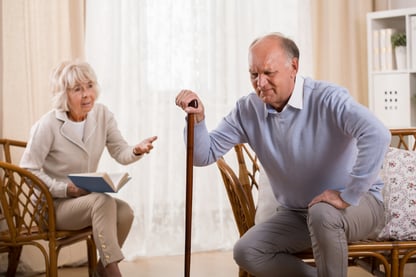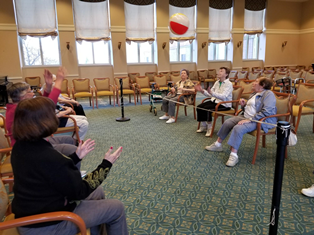 Staying home is something we are all doing more of lately due to the COVID-19 epidemic. Spending more time at home has some benefits like increased family time, less driving, and especially lowering the risk of contracting COVID-19. Unfortunately, there are also hefty drawbacks to being homebound. As we spend more time inside, we are also sitting for longer and longer periods of time. Watching movies, reading books, or napping are all fun and enjoyable seated activities. Unfortunately, doing too much of these things can have disastrous results on our health. Taking breaks from sitting every 30 – 60 minutes will improve your safer-at-home experience by reducing risk of deadly blood clots, maintaining muscle and bone health, and using up energy that would otherwise be stored as fat.
Staying home is something we are all doing more of lately due to the COVID-19 epidemic. Spending more time at home has some benefits like increased family time, less driving, and especially lowering the risk of contracting COVID-19. Unfortunately, there are also hefty drawbacks to being homebound. As we spend more time inside, we are also sitting for longer and longer periods of time. Watching movies, reading books, or napping are all fun and enjoyable seated activities. Unfortunately, doing too much of these things can have disastrous results on our health. Taking breaks from sitting every 30 – 60 minutes will improve your safer-at-home experience by reducing risk of deadly blood clots, maintaining muscle and bone health, and using up energy that would otherwise be stored as fat.
- First, sitting for extended periods of time negatively affects your body’s ability to circulate blood. When you spend too much time sitting, blood pools in the legs which can cause blood clots to form. This is known as a deep vein thrombosis (DVT). Some DVT’s are small enough to not cause any harm, but it is possible for the clot to dislodge and travel to the lungs. This can lead to a deadly pulmonary embolism. Older adults are at a higher risk for blood clots like this, especially in combination with a medical history of cancer, obesity, or recent lower body surgery. To combat the risk of DVT’s and pulmonary embolisms, take frequent breaks from sitting.
- Second, being immobile causes your muscles to shrink. The saying “use it or lose it” is true in this case. When you regularly stay seated for too long, your body adapts. The body’s ability to adapt is a marvelous thing, but it can unfortunately lead to some very negative side effects in this case. Muscles are responsible for movement. If we don’t move or exercise, there is no reason for our bodies to hold on to muscle tissue. All of this applies to bone tissue as well. If your bones do not frequently bear your weight, they will lose density and strength. This can lead to a condition called osteoporosis. Fortunately, there is a simple remedy. Get up, move around, and use your bones and muscles!
- Finally, you should take breaks from sitting because it will help you maintain a healthy weight and body composition. When we are resting in a seated or reclined position, our bodies are not using very much energy. Long periods of inactivity lead to excess storage of energy, which in this case will be body fat. If your body holds on to too much stored fat, this can increase your risk of diseases like hypertension, type II diabetes, and cancer. To properly manage the amount of fat your body stores, it’s incredibly important to use up the energy that you consume (calories). The human body naturally uses energy from food to maintain its complex systems, but physical activity is the best way to burn more calories. To fight off excess body fat and the risk of disease that comes with it, manage your energy intake and output!
Optimal circulation, lean mass maintenance, and a healthy bodyweight are all goals that we should aim for during the COVID-19 epidemic and beyond. As we reduce our risk of contracting the virus, we should also aim to reduce our risk of serious inactivity related diseases. One extremely effective way to do this is taking breaks from sitting. At least once per hour, stand up and walk around for at least 5 minutes. Use your muscles by completing a few basic exercises like marching, wall push-ups, or chair stands. All of this together will help you stay healthy and strong as you stay at home. If you find yourself sitting down for a long period of time, remember to take a break from sitting every 30 – 60 minutes.


.jpg?width=335&name=GettyImages-526312285%20(1).jpg) pickleball.
pickleball.
.jpg?width=378&name=Senior%20dancing%20GettyImages-504735537%20(1).jpg)

.jpg?width=476&name=Magnifying%20glass%20GettyImages-859832992%20(1).jpg)


